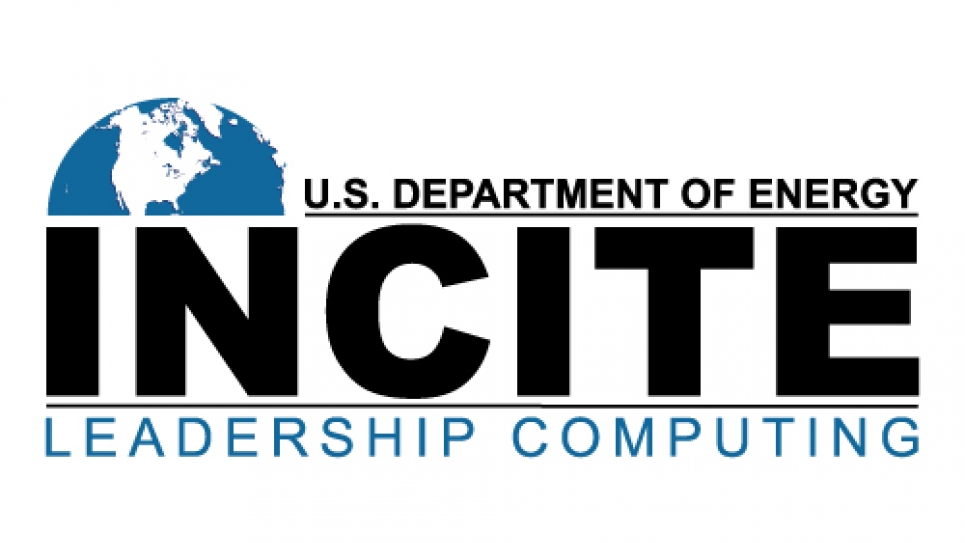
INCITE grants awarded to 56 computational research projects
The U.S. Department of Energy’s Office of Science announced 56 projects aimed at accelerating discovery and innovation to address some of the world’s most challenging scientific questions. The projects will share 5.8 billion core-hours on America’s two most powerful supercomputers dedicated to open science. The diverse projects will advance knowledge in critical areas ranging from sustainable energy technologies to next-generation materials.
Researchers from academia, government research facilities, and industry received computing time through the Innovative and Novel Computational Impact on Theory and Experiment, or INCITE, program. The program was created as the primary means of accessing the DOE Leadership Computing Facilities at Argonne and Oak Ridge national laboratories.
“The INCITE program drives some of the world’s most ambitious and groundbreaking computational research in science and engineering,” said James Hack, director of the National Center for Computational Sciences, home to the Oak Ridge Leadership Computing Facility, a DOE Office of Science User Facility. “The program has a very strong and diverse collection of projects in 2016, and we look forward to working with investigators to ensure they succeed with their challenging objectives.”
“Not only does INCITE give researchers access to two of the fastest supercomputers in the world, the program also provides support and expertise to make sure they maximize their time on our leading-edge systems,” said Michael Papka, director of the Argonne Leadership Computing Facility (ALCF), a DOE Office of Science User Facility.
The INCITE program issued its first awards in 2004, when three projects received an aggregate five million core-hours. Today’s collective allocation of 5.8 billion core-hours represents 1,000-fold growth in computational resources provided to award recipients. The average award is more than 85 million core-hours—with specific awards of up to several hundred million core-hours—on systems capable of quadrillions of calculations per second.
The OLCF’s Titan supercomputer is a 27-petaflop Cray XK7 hybrid system employing both CPUs and energy-efficient, high-performance GPUs in its 18,688 compute nodes. The ALCF’s Mira supercomputer is a 10-petaflop IBM Blue Gene/Q system with 49,152 compute nodes and a power-efficient architecture.
Despite continued upgrades, expansions, and advances in computing power, demand for leadership-class resources such as Mira and Titan continues to exceed availability. Applications for time through the INCITE program once again greatly exceeded the numbers of awards.
For a complete list of 2016 INCITE awards, please visit: http://www.doeleadershipcomputing.org/awards/2016INCITEFactSheets.pdf
Among 2016 INCITE award recipients:
- Martin Berzins of the University of Utah received 351 million core-hours to study ultra super critical coal boilers, leading to improved efficiency and new designs for safer next-generation coal boilers.
- Jonathan Poggie of Purdue University received 150 million core-hours to study turbulent flows as they relate to high-speed aircraft in an effort to make more efficient, safer, high-speed commercial aircraft as well as spacecraft.
- Jacqueline Chen of Sandia National Laboratories received 96 million core-hours to simulate turbulent combustion processes as they relate to fuel-flexible stationary gas turbines and fuel-efficient clean internal combustion engines using biofuels.
- Gabriel Kotliar of Rutgers University received 85 million core-hours to study neutron scattering cross sections of strongly correlated materials that are of strategic interest to DOE due to their promising high-temperature superconductivity properties.
- James Stone of Princeton University received 47 million core-hours to explore the physics of radiation-dominated flows around compact objects, resulting in an increase in the understanding of supermassive black holes in the early universe.
- Thomas Miller of the California Institute of Technology received 40 million core-hours to develop safer, more efficient polymer to improve electrolyte materials for lithium ion batteries, and then comparing simulation data with experimental results from synthetic chemistry and chemical engineering experiments.
The INCITE program promotes transformational advances in science and technology through large allocations of time on state-of-the-art supercomputers. For more information, please visit: http://www.doeleadershipcomputing.org/incite-program/.
DOE’s Office of Science is the single largest supporter of basic research in the physical sciences in the United States and is working to address some of the most pressing challenges of our time. For more information, please visit http://science.energy.gov.
